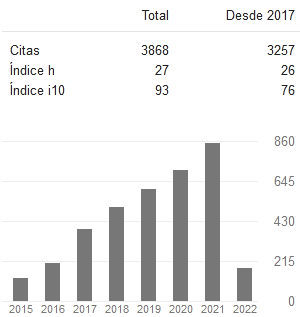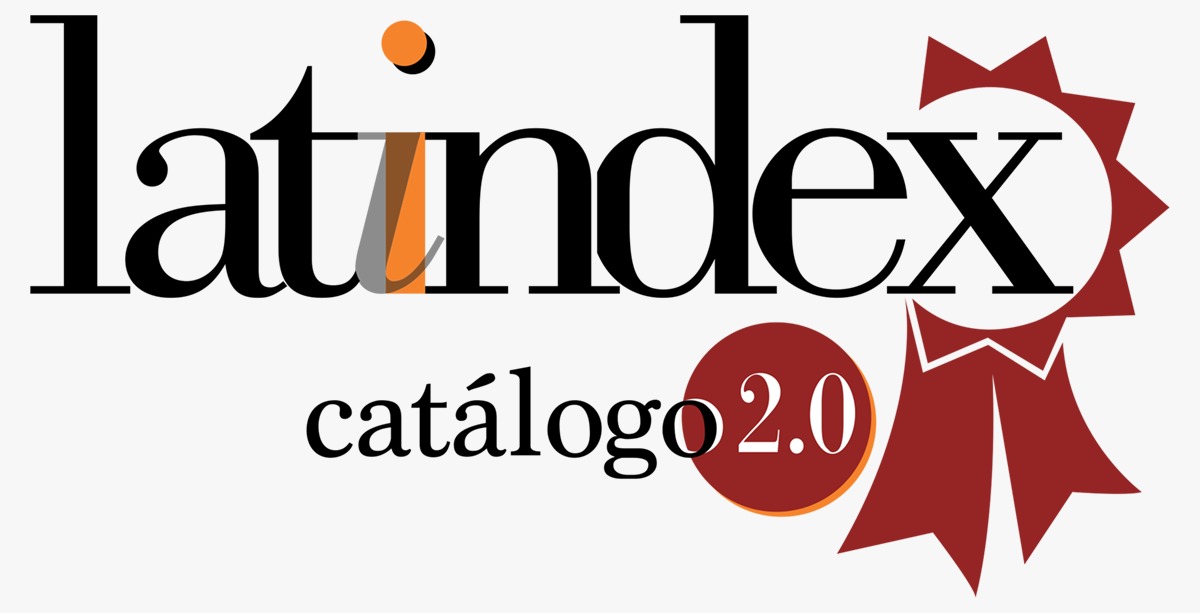CONSIDERATIONS ON THE DEVELOPMENT OF THE UNIVERSITY STUDENTS ORAL PRESENTATION SKILLS IN ENGLISH
Keywords:
Skills; oral presentation; English Language.Abstract
The subject English for academic purposes, with second year university students, has as one of its central objectives the development of the oral presentation skills of the students. By means of some diagnostic instruments, it has been identified that, when delivering oral presentations, Computer Science students have some difficulties related to: keeping visual contact with the audience, using the aids correctly, expressing their ideas in a natural an independent manner. In the different studies consulted it was revealed that the methodology used to develop presentation skills is focused on the study of the text as a model. The purpose of this work is to analyze the approach widely adopted and propose a multidimensional perspective, where the individual as speaker performs a crucial role. In addition, Information and Communication Technologies are considered in the proposal.
Downloads
References
Abidi, A. A., (2012). Developing Awareness of Oral Proficiency through Online Chat. Leeds eltech Blog. University of Leeds. UK. Disponible en: http://leedseltech.blogspot.com/ Consultado: 015/10/2012 07: 25
Andeweg, B., & de Jong, J. (1998). “May I have yourattention” Exordial techniques in informative oral presentations. Technical Communication Quarterly. 7(3), 271-284.
Bakhtin, M. M. (1979). The Aesthetics of Verbal Creat ivi ty. Moscow: Iskusstvo
Bankowski, E. (2010). Developing Skills for Effective Academic Presentations in EAP. Hong Kong: International Journal of Teaching and Learning in Higher Education (en línea). Disponible en: http://www.isetl.org/ijtlhe/ [Consultado el 7 de junio de 2013]
Bayless, M. (2004). Change the placement, the pace,and the preparation for the oral presentation. Business Communication Quarterly, June,222-225.
Behnke R., & Sawyer, C. (2000). Anticipatory anxiety patterns for male and female public speakers. Communication Education, 49 (2),187-195.
Bermúdez, R. y Rodríguez, M. (1996).Teoría y Metodología del aprendizaje. La Habana: Editorial Pueblo y Educación.
Bourhis, J., & Allen, M. 1998). The role of videotaped feedback in the instruction of public speaking: a quantitative synthesis of published empirical research. Communication Research Reports, 15(3),256-261.
Breen, M. (1987). Learner contributions to task design. In Candlin, C. and Murphy, D. (eds.) Language Learning Tasks. Englewood Cliffs NJ: Prentice-Hall.
Brito, H. Capacidades, habilidades y hábitos. Una alternativa teórica, metodológica y práctica. (Ponencia presentada en el primer coloquio sobre inteligencia) ISP “Enrique José Varona”. La Habana, Junio, 1990.
Brown, G. y Jule, G. (1983). Teaching the spoken language. An approach based on the analysis of conversational English. Cambridge: Cambridge university press.
Calcich, S., & Weilbaker, D. (1992). Selecting the optimum number of in-class sales presentations. Marketing Education Review, 2, 31-33.
Campbell, K., Mothersbaugh, D., Brammer, C., & Taylor, T. (2001). Peer versus self-assessment of oral business presentation performance. Business Communication Quarterly, 64(3), 23-42.
Carlson, R., & Smith-Howell, D. (1995). Classroom public speaking assessment: reliability and validity of selected evaluation instruments. Communication Education, 44,87-97.
Castellanos y Grueiro (1999). Enseñanza y estrategias de aprendizaje: los caminos del aprendizaje autoregulado. Curso Pre – reunión Pedagogía 1999.
Chávez, J. y otros. (2000). Introducción a la Pedagogía. Colombia: Bogotá Plaza Editores.
Cheng, W., & Warren, M. (2005). Peer assessment of language proficiency. Language Testing, 22(1), 93-121.Edens, F., Rink, F., & Smilde, M. (2000) De Student court of justice: an evaluation of assessment instruments for presentation skills. Journal for Educational Research, 24 (3-4), 265-274.
Conor, C. (2006). Enhancing reflective learning through role-plays: the use of an effective sales presentation evaluation form in student role-plays. Marketing Education Review, 16(1), 9-13.
Culley, J.M. & Polyakova-Norwood, V. (2010). Online Role play activities for developing oral presentation proficiency. South Carolina: 26th Annual Conference on Distance Teaching & Learning (en línea). Disponible en: http://www.isetl.org [Consultado el 7 de junio de 2013]
Ferris, D. y Tagg, T. (1996). Academic Oral Communication Needs of EAP Learners: What Subject-Matter Instructors Actually Require. TESOL Quarterly (en línea). Disponible en: http://www.jstor.org/stable/3587585 . [Consultado el 4 de marzo de 2011]
Galperin, P. Ya. (1979). Sobre la formación de los conceptos de las acciones mentales. En: Temas de Psicología. La Habana: Editorial Orbe.
González, F. (1989). Psicología. Principios y categorías. Ciudad de la Habana: Editorial Ciencias Sociales.
Jensen, K., & Harris, V. (1999). The public speaking portfolio. Communication Education, 48,211-227.
Jones, P. (1996) Talking to learn. Sydney: Primary English Teaching Association.
King, J. (1998). Preparing EFL Learners for Oral Presentations. Taiwan: The Internet TESL Journal (en línea). Disponible en: http://iteslj.org/ [Consultado el 7 de junio de 2013]
Langan, A., y otros. (2005). Peer assessment of oral presentations: effects of student gender, university affiliation and participation in the development of assessment criteria. Assessment & Evaluation in Higher Education, 30 (1), 21-34.
Lazaraton, A., (2001). Teaching oral skills. En: Celce-Murcia, M.(ed), Teaching English as a Second or Foreign Language. (pp. 103-115). Von Hoffmann Graphics. USA.
Leontiev, A. A. (1969). Psycholinguistic Units and Speech Product ion. Moscow: Nauka.
Magin, D., & Helmore P. (2001) Peer and teacher assessments of oral presentation skills: how reliable are they? Studies in Higher Education, 26(3),287-298.
Martínez, P., (2006). La presencia de las Tecnologías de la Información y la Comunicación en el aula de Inglés de secundaria: Descripción del marco contextual y análisis de la motivación de los alumnos. Tesis doctoral. Departamento de Filología Inglesa y Alemana. Universidad de Barcelona.
McCarthy, M. y Carter, R. (1995). Language as discourse. Perspectives for language teaching. Applied Linguistics and Language Study. London and New York: Longman.
MES (2007). Programa de la Disciplina Idioma Inglés para el Plan de Estudios “D” para la Carreras Ingeniería Informática.
MES (2013). Documento para Consejo de Dirección MES Noviembre 2013
Nunan, D. (2004). Task-Based Language Teaching. Cambridge: Cambridge University Press.
Patri, M. (2002) The influence of peer feedback on self and peer assessment of oral skills. Language Testing 19(2),109-131.
Richards, J. (2002), Developing Classroom Speaking Activities; from theory to practice. Cambridge: English Language Teaching.
Richards, J., Platt, J. and Weber, H.. (1986). Longman Dictionary of Applied Linguistics. London: Longman.
Rico, P. (2002). La Zona de Desarrollo Próximo. Procedimientos y tareas de aprendizaje. Ciudad Habana: Editorial Pueblo y Educación.
Rybold, G. (2006). Speaking, Listening and Understanding. Debate for Non-Native English Speakers. New York: International Debate Education Association.
Santiesteban, K., (2012). Estrategia Didáctica dinámico-participativa para el desarrollo de la Habilidad Generalizada Hablar en Idioma Inglés en estudiantes de Estudios Socioculturales. Tesis en opción al Título Académico de Master en Ciencias. Departamento de Idiomas. Universidad de Las Tunas.
Silvestre, M. (2002). Exigencias didácticas para dirigir un proceso de enseñanza-aprendizaje desarrollador. En: Silvestre, M. y Zilberstein, J., Hacia una didáctica desarrolladora. (pp. 23-56). Ciudad de La Habana: Editorial Pueblo y Educación.
Talízina, N. F. (1988). Psicología de la enseñanza. Moscú: Editorial progreso.
Thornbury, S. (2002). How to teach speaking. UK: Longman.
Thorp, D. de (1991). Confused encounters: differing expectations in the EAP classroom. ELT Journal April 45(2), 10-22
Vygotsky, L. S. Interacción entre enseñanza y desarrollo. Material impreso, s/f
Xian-long, F. (2009). Problems and strategies for Chinese English major students’ oral skills development. School of Foreign Studies, Central South University, Changsha 410083, China. Aug. 7(8), 5-1
Downloads
Published
How to Cite
Conference Proceedings Volume
Section
License
Copyright (c) 2020 Yamisleydis Pérez Peña

This work is licensed under a Creative Commons Attribution 4.0 International License.
Usted es libre de:
- Compartir — copiar y redistribuir el material en cualquier medio o formato
- Adaptar — remezclar, transformar y construir a partir del material para cualquier propósito, incluso comercialmente.
Bajo los siguientes términos:
- Atribución — Usted debe dar crédito de manera adecuada, brindar un enlace a la licencia, e indicar si se han realizado cambios. Puede hacerlo en cualquier forma razonable, pero no de forma tal que sugiera que usted o su uso tienen el apoyo de la licenciante.
- No hay restricciones adicionales — No puede aplicar términos legales ni medidas tecnológicas que restrinjan legalmente a otras a hacer cualquier uso permitido por la licencia.













































